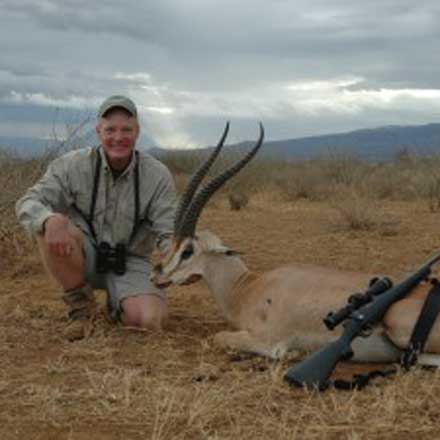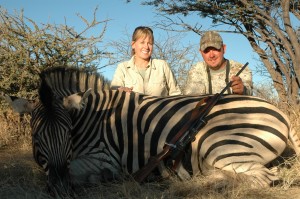
Despite all the brave new magnums, the cartridge we know as the .30-06, properly “caliber .30, model of 1906,” remains America’s favorite hunting cartridge. In America, we may not think of the .30-06 as ideal for sheep, and probably not perfect for big bears. But, it will do these things and a whole lot more. It’s a great cartridge for most deer and elk hunting. It is fine for black bear, and so forth. It is not extremely flat shooting, but it is flat-shooting enough. It is adequately powerful for most things on our continent, but it does its work with mild recoil and modest muzzle blast. So, perhaps its greatest virtue is an acceptable combination of performance and shootability.
This same attribute is why the .30-06 remains one of the most popular African hunting cartridges. The cartridge made its African debut with Theodore Roosevelt in 1909. A
few years later, Leslie Tarlton, one of the PHs on the Roosevelt safari, described the .30-06 as “the best of the small bores.” Of course, it was loaded differently back then, and was slower with a heavy-for-caliber 220-grain bullet. With that heavy bullet, it was often used for the largest game by hunters including Ernest Hemingway on his Green Hills safari in 1934.
We no longer consider a .30-caliber with heavy solids ideal (or even legal) for elephant or rhino, nor, with heavy softpoints, ideal (or even legal) for lion or buffalo. But the .30-06 remains a favorite for virtually the full range of non-dangerous game, and pretty much perfect for leopard. There are many African hunters who prefer .270s and 7mms, and the .300 magnums have a strong following. But, if you bring a .30-06 on safari, your professional hunter is sure to smile. You are sure to do well.
professional hunter is sure to smile. You are sure to do well. I learned this back in 1977 on my first African safari. I had other rifles that would have worked, but I chose the .30-06 out of the tradition established by Roosevelt, Hemingway, and later, Robert Ruark. It was their books that made me want to go to Africa, and the .30-06 rifles served them well. They chose wisely—and so did I! On that first safari, that .30-06, a Ruger M77 loaded with 180-grain Nosler Partitions, did me proud.
At the beginning, up on Mount Kenya, I missed a couple of bushbuck. Like Ruark said, everybody misses at first because “the light is tricky.” No, it isn’t. I was nervous, and I was trying too hard. Then, I got...
a fine bushbuck in thick cover and a lovely waterbuckat maybe 250 yards. Then we moved on down to the Tsavo plain, and I settled down. That .30-06 accounted for everything from dik dik and steenbok to oryx and zebra—one bullet each, more than a dozen one-shot kills. Shots ranged from 40 yards in thick brush to a 400-yard poke at a hartebeest.

All shots worked, and I learned the great truths about the .30-06. It isn’t fast or flashy, but it really is flat enough for most shooting—and if you understand its trajectory, it willreach out as far as most of us need to reach. Because of its modest velocity, bulletperformance tends to be marvelous. Recoil is mild enough that most people can shoot it well—and in the African context, you can shoot the .30-06 well every day, several times a day, if the opportunities arise.
Over the years, I have not remained consistently loyal to the .30-06. I’ve used a wholebunch of different cartridges for the general run of African plains game, from .270 on up to .375. I’ve done well with them all, and no failures have been the fault of the cartridges. My perfidy showed me that none of these cartridges, whether faster, larger in caliber, or heavier in bullet weight, have been noticeably better than the .30-06.So, I’ve gone full circle, and I’ve comeback to the .30-06 as the African light rifle,the utility infielder, the rifle you will usealmost every day, at all ranges, on gameranging from a 30-pound duiker to an 800-pound zebra. It works. It works well, and with little fanfare and minimal fuss. Whatmore can you ask?